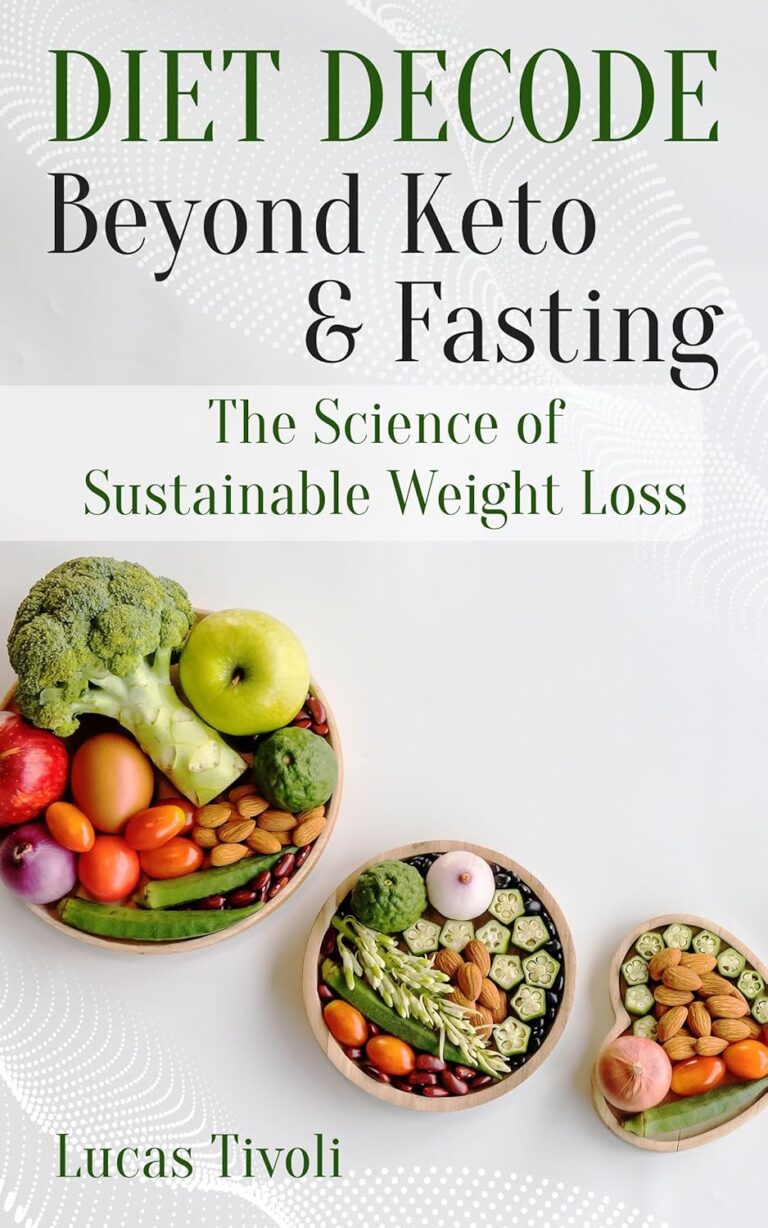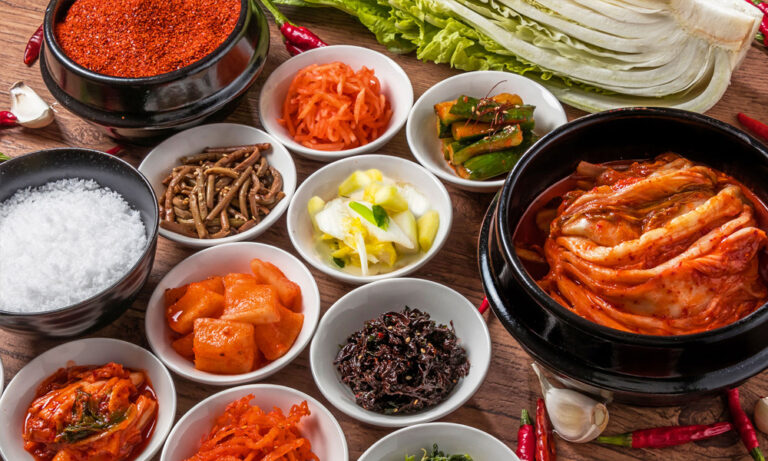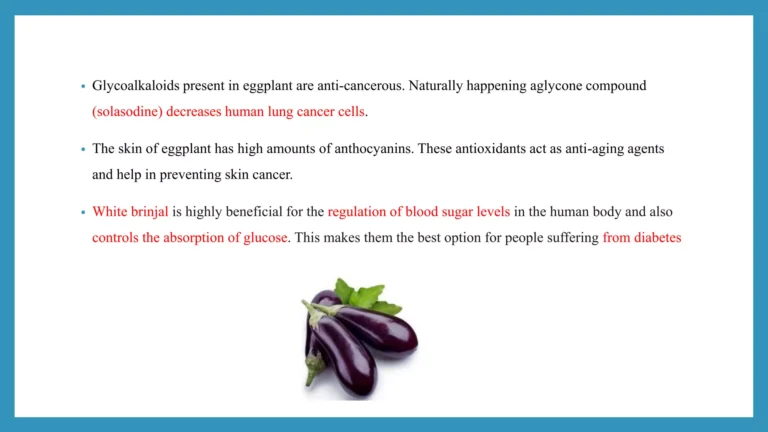Mindful Munching: Simple Techniques to Stop Stress-Eating and Start Savoring
The flickering blue light of the television cast long shadows across the living room. Sarah, nestled deep into the cushions, felt the familiar tension in her shoulders. Another day, another relentless barrage of deadlines, demanding emails, and the subtle hum of existential dread that seemed to be the soundtrack of modern life. Her hand, almost on autopilot, reached into the crinkling bag beside her. The salty crunch of the chips offered a fleeting, almost primal satisfaction, a temporary lull in the storm brewing within her. Bite after bite, she barely registered the taste, the texture, or even the act of chewing. It was less about hunger and more about a desperate, unconscious plea for comfort, a momentary escape from the relentless demands of her world.
This scene, or variations of it, is profoundly familiar to countless individuals navigating the tumultuous landscape of contemporary existence. We live in an era of unprecedented stress, where the lines between work and life blur, digital notifications constantly vie for our attention, and the sheer volume of information can feel overwhelming. Alongside this, we inhabit a world of abundant, often hyper-palatable food, readily available at our fingertips. This potent cocktail of stress and accessibility creates a fertile ground for a widespread, insidious habit: stress-eating. It’s a coping mechanism, a silent plea for solace, often leaving us feeling worse than before – physically sluggish, mentally foggy, and burdened by a fresh wave of guilt and self-reproach.
But what if there was another way? What if we could reclaim our relationship with food, transforming it from a source of anxiety and unconscious consumption into an act of profound self-care and genuine pleasure? This is the promise of mindful munching – a practice that invites us to slow down, tune in, and engage all our senses in the act of eating. It’s not a diet, not a deprivation, but a journey towards a deeper understanding of ourselves, our hunger, and the intricate dance between our emotions and our plates. It’s about telling a new story, one where we are the protagonist, empowered to savor not just our food, but the very moments of our lives.
Understanding the Enemy: The Roots of Stress-Eating
Before we can cultivate a new approach, we must first understand the intricate web that underpins stress-eating. It’s far more complex than simply a lack of willpower; it’s a sophisticated interplay of physiology, psychology, and learned behaviors, woven together over years.
The Physiological Undercurrent: Our Primal Brain’s Call
At its core, stress-eating is a survival mechanism gone awry. When we encounter stress, our ancient "fight or flight" response kicks in. The hypothalamus signals the adrenal glands to release a cascade of hormones, most notably cortisol and adrenaline. Adrenaline provides the immediate burst of energy, while cortisol is designed for sustained stress, increasing glucose in the bloodstream and suppressing non-essential bodily functions. Historically, this response prepared us to flee a predator or fight for resources.
However, in our modern world, the "predators" are often abstract: financial worries, job insecurity, relationship conflicts, or even just the incessant ping of a smartphone. Our bodies react as if we need to outrun a saber-toothed tiger, but instead, we’re sitting at a desk. This chronic activation of the stress response leads to elevated cortisol levels. And here’s the kicker: prolonged high cortisol can increase appetite, particularly for calorie-dense, palatable foods – those rich in sugar, fat, and salt. These "comfort foods" offer a rapid, albeit temporary, surge of dopamine and serotonin, the brain’s feel-good neurotransmitters, creating a powerful reward pathway. Our primal brain, desperate for safety and reward, learns that these foods provide a quick, albeit fleeting, sense of relief. It’s a chemical hug, short-lived but potent.
The Psychological Labyrinth: Emotional Voids and Habitual Loops
Beyond the hormonal dance, stress-eating is deeply rooted in our psychological landscape. Our emotions, often unacknowledged or unaddressed, frequently find an outlet through food.
- Emotional Anesthesia: When we feel overwhelmed, anxious, sad, lonely, or bored, food can act as a potent anesthetic. It numbs the uncomfortable feelings, providing a distraction or a temporary sense of fullness that masks the emptiness within. The act of chewing and swallowing can be grounding, a simple, repetitive motion that momentarily quiets the racing thoughts.
- Childhood Conditioning: Many of us learned early on that food is synonymous with comfort, celebration, or even reward. A scraped knee met with a cookie, a good report card with ice cream. These powerful associations, formed in our formative years, deeply embed the idea that food is more than just fuel; it’s a balm for emotional wounds and a symbol of love and approval.
- Habitual Responses: Over time, stress-eating often becomes an unconscious habit. The moment we sit down to watch TV, the hand automatically reaches for a snack. A difficult phone call is immediately followed by a trip to the pantry. These "triggers" become so ingrained that we don’t even consciously decide to eat; the action just happens, a well-worn groove in our behavioral patterns.
- Societal Pressures and Diet Culture: The constant bombardment of diet culture, with its cycles of restriction and indulgence, often leaves individuals feeling out of control and disempowered around food. The very act of trying to "be good" can ironically create more stress, leading to a compensatory binge when willpower inevitably wanes.
The Vicious Cycle: A Self-Perpetuating Trap
This intricate interplay creates a vicious cycle. Stress triggers the urge to eat. We succumb, finding temporary relief. But soon, guilt and shame creep in, fueled by feelings of failure, a perceived lack of control, and often, physical discomfort. This guilt itself becomes another source of stress, leading us right back to the comforting embrace of food. The cycle deepens, strengthening the neural pathways that link stress to eating, making it harder and harder to break free. It’s a narrative of self-sabotage, told one unconscious bite at a time.
The Mindful Munching Philosophy: A Paradigm Shift
To break free from this cycle, we need more than just a diet plan or a list of "good" and "bad" foods. We need a fundamental shift in our relationship with food, our bodies, and our inner world. This is where the philosophy of Mindful Munching comes in – a practice rooted in the ancient wisdom of mindfulness, adapted for the modern plate.
Mindfulness, at its core, is the practice of paying attention, on purpose, to the present moment, non-judgmentally. When applied to eating, it transcends the mere act of consuming calories. It transforms eating into an opportunity for conscious engagement, self-discovery, and profound sensory pleasure.
Core Principles of Mindful Eating:
- Non-Judgmental Observation: This is perhaps the most challenging, yet crucial, aspect. Instead of labeling our hunger, cravings, or eating choices as "good" or "bad," we observe them with curiosity and acceptance. We notice the sensation of hunger without immediately rushing to fill it, or the urge to stress-eat without automatically giving in. This detachment creates space for choice.
- Curiosity: Mindful eating encourages us to approach our food and our internal experience with a beginner’s mind. What does this food truly taste like? What sensations arise in my body as I eat? What emotions are present right now? This inquisitive stance replaces automaticity with intention.
- Acceptance: We acknowledge our current state, whatever it may be – our hunger, our emotions, our past eating patterns – without wishing them away or criticizing ourselves. Acceptance doesn’t mean condoning unhealthy habits, but rather creating a foundation of self-compassion from which change can genuinely emerge.
- Connection to Internal Cues: Mindful eating gently guides us back to our innate wisdom. It teaches us to discern true physical hunger from emotional hunger, to recognize subtle signs of satiety, and to honor our body’s inherent intelligence. This contrasts sharply with external rules imposed by diets, which often override our body’s natural signals.
Beyond Dieting: A Sustainable Path
Traditional diets, with their focus on restriction, rules, and external control, often create a paradoxical relationship with food. They tell us what, when, and how much to eat, divorcing us further from our internal wisdom. This external locus of control is inherently unsustainable, leading to cycles of deprivation, rebellion, and ultimately, feelings of failure.
Mindful munching offers a radically different narrative. It empowers us to become our own expert, to listen to our body’s unique needs, and to cultivate an internal compass for eating. It’s not about perfection but about progress, about showing up for ourselves with kindness and awareness, one meal, one bite at a time. It’s a journey of re-connection, transforming food from a source of stress into a tool for self-awareness and a source of genuine nourishment and joy. The story shifts from one of restriction and punishment to one of liberation and mindful indulgence.
Simple Techniques for Mindful Munching: The "How-To"
Embracing mindful munching doesn’t require drastic overhauls or complex rituals. It’s about integrating small, intentional practices into our daily lives, gradually rewiring our relationship with food. These techniques are tools to help us tell a new story about our eating habits.
A. The Pre-Meal Pause: Checking In
Before the first bite touches your lips, pause. This simple act is perhaps the most powerful intervention.
- The Hunger Scale: Take a moment to assess your physical hunger on a scale of 1 to 10 (1 = ravenous, faint; 5 = comfortably neutral; 10 = painfully stuffed). Aim to eat when you’re at a 3 or 4, and stop when you’re at a 6 or 7. This helps distinguish true physiological hunger from other urges.
- Emotional Check-in: Ask yourself: "Am I truly hungry, or am I feeling something else?" Is it boredom, stress, loneliness, anxiety, or simply habit? Acknowledge whatever comes up without judgment. Sometimes, simply identifying the emotion is enough to diffuse the automatic urge to eat.
- Sensory Awareness: Take a deep breath. What do you see, hear, and smell in your environment? Notice the colors and textures of your food. Inhale its aroma. This grounds you in the present moment, shifting your focus from internal turmoil to external reality.
B. The Sensory Feast: Engaging All Senses
Eating is a multi-sensory experience that we often rush through. Mindful munching invites us to awaken all our senses, transforming a mundane act into a rich exploration.
- Sight: Before you even pick up your fork, truly look at your food. Appreciate the colors, the arrangement on the plate, the textures. Notice the steam rising. Even a simple sandwich can become a work of art when viewed with intention.
- Smell: Bring the food closer to your nose. Inhale deeply. Can you identify different ingredients by their scent? How does the aroma change as you prepare to eat? Our sense of smell is intimately linked to taste and satisfaction.
- Touch: Notice the temperature of the plate, the weight of your utensils. As you bring the food to your mouth, feel its texture – soft, firm, crisp. Once in your mouth, pay attention to its consistency on your tongue, against your teeth.
- Sound: What sounds does your food make? The crunch of a salad, the gentle slurp of soup, the soft squish of a ripe fruit. Even the quiet hum of chewing can be a mindful experience.
- Taste: This is where the magic truly happens. Take a small bite. Don’t swallow immediately. Let the flavors unfold on your tongue. Can you identify sweet, sour, salty, bitter, umami? Notice how the taste changes as you chew. Does a new flavor emerge? Does the initial intensity fade? This detailed exploration of taste is what transforms eating into savoring. A powerful exercise for this is the "raisin exercise": slowly eat a single raisin, examining it with all five senses, often revealing surprising depth.
C. Slowing Down: The Pace of Pleasure
The modern pace of life often translates to the pace of our eating. We rush, gulp, and barely chew. Slowing down is critical for mindful eating.
- Put Down Utensils: Between each bite, consciously place your fork or spoon down on the table. This simple act creates a natural pause, preventing mindless shoveling.
- Chew Thoroughly: Aim for at least 20-30 chews per bite, or until the food is almost liquid. This aids digestion and allows your taste buds ample time to register flavors.
- Small Bites: Taking smaller portions with each mouthful allows for greater appreciation and prevents overfilling.
- Allow for Satiety Signals: It takes approximately 20 minutes for your stomach to signal your brain that it’s full. By eating slowly, you give your body a chance to register fullness before you’ve overeaten.
D. Listening to Your Body: Hunger and Fullness Cues
Reconnecting with your body’s innate wisdom is a cornerstone of mindful eating.
- True Physical Hunger: This manifests as subtle rumblings in the stomach, a slight dip in energy, or a gentle emptiness. It’s a gradual onset, not a sudden, urgent craving.
- Head Hunger/Emotional Hunger: This is often sudden, urgent, and focused on specific "comfort" foods. It doesn’t originate in the stomach and often disappears if you distract yourself for a few minutes.
- Stopping at Comfortable Fullness: The goal is to reach a state of comfortable satisfaction, not painful fullness. Tune into the subtle signals that indicate you’ve had enough – a feeling of ease, a waning interest in the food, or simply the absence of hunger.
E. Creating a Mindful Eating Environment
Our surroundings profoundly impact our eating experience.
- Eliminate Distractions: Turn off screens (TV, phone, computer). Put away books and work. Dedicate this time solely to eating.
- Designated Eating Space: Whenever possible, eat at a table, not in front of a screen or in your car. This elevates the act of eating.
- Table Setting: Even simple touches like a placemat, a nice plate, or a glass of water can enhance the experience, signaling to your brain that this is a special, intentional act.
F. Acknowledging and Releasing Judgment
Mindful eating is a practice, not a destination. There will be days when you forget, when stress-eating creeps back in, or when you feel you’ve "failed."
- Self-Compassion: Treat yourself with the same kindness and understanding you would offer a friend. Perfection is an illusion; progress is the goal.
- Learning from Slips: Instead of spiraling into guilt, view setbacks as opportunities for learning. What triggered the slip? What could you do differently next time?
- Re-commit with Kindness: Simply acknowledge what happened and gently guide yourself back to the practice. Each moment is a fresh opportunity to begin again.
Imagine Mark, a busy software engineer. He started with just one mindful meal a day, his lunch. Initially, it felt awkward, forcing himself to put down his fork. He’d catch himself halfway through a bite, mindlessly scrolling, and gently bring his attention back to the texture of his sandwich. Slowly, the flavors of the basil and tomato, which he’d never truly noticed before, began to pop. He realized his "hunger" often coincided with a stressful meeting. He started asking himself, "Is this my stomach or my anxiety talking?" This simple question, repeated over weeks, began to shift his story from one of unconscious reaction to conscious choice.
Beyond the Plate: Integrating Mindfulness into Life
The profound benefits of mindful munching extend far beyond our relationship with food. As we cultivate present moment awareness at the table, this capacity for mindfulness naturally spills over into other areas of our lives, creating a ripple effect of well-being. The story of our transformation isn’t just about what we eat, but how we live.
Mindful Movement: Reconnecting with the Body
Mindful eating teaches us to tune into our body’s sensations of hunger and fullness. This same principle can be applied to movement. Instead of viewing exercise as a chore or a punishment for perceived dietary "sins," mindful movement invites us to listen to what our body needs. It’s about noticing the joy of stretching, the invigorating rush of a brisk walk, or the grounding sensation of yoga. It’s about moving in ways that feel good, not just burning calories, fostering a healthier, more intuitive relationship with our physical form. This cultivates a narrative of self-care and respect for our body’s capabilities.
Mindful Breathing: A Quick Stress-Buster
One of the most immediate and accessible tools for managing stress, and thereby reducing the impulse to stress-eat, is mindful breathing. Just a few deep, conscious breaths can activate the parasympathetic nervous system, signaling to our body that it’s safe to relax. Before reaching for that comfort food, try this: Inhale slowly through your nose for a count of four, hold for a count of four, and exhale slowly through your mouth for a count of six. Repeat this three to five times. This simple act can create a crucial pause, allowing you to choose a different response than automatic eating. It interrupts the old story and creates space for a new one.
Mindful Self-Compassion: Addressing the Underlying Self-Criticism
Stress-eating is often accompanied by a harsh inner critic, berating us for our perceived lack of willpower or our "failures." Mindfulness encourages self-compassion – treating ourselves with the same kindness and understanding we would offer a dear friend. When we slip, instead of saying, "I’m such a failure, I’ll never get this right," we can say, "This is hard. Everyone struggles sometimes. What can I learn from this, and how can I support myself now?" This shift from self-criticism to self-kindness is transformative, dismantling a core trigger for the stress-eat-guilt cycle. It rewrites the narrative from one of self-punishment to one of self-nurturing.
Building New Coping Mechanisms: Expanding Our Toolkit
As we become more aware of our emotional triggers for eating, we can proactively develop healthier, more effective coping mechanisms. This means expanding our toolkit beyond food.
- Journaling: Writing down our thoughts and feelings can help us process emotions without resorting to food. It creates an external outlet for internal turmoil.
- Meditation/Mindfulness Practices: Formal meditation helps train our attention and emotional regulation, making it easier to observe urges without acting on them.
- Connecting with Others: Reaching out to a trusted friend, family member, or therapist can provide the emotional support and connection that food often temporarily mimics.
- Engaging in Hobbies: Immersing ourselves in activities we enjoy – reading, painting, playing music, gardening – can be powerful distractions and sources of genuine fulfillment, shifting focus from food to passion.
- Nature Immersion: Spending time outdoors has been proven to reduce stress and improve mood, offering a natural antidote to the anxiety that often fuels stress-eating.
By integrating these broader mindfulness practices into her life, Sarah, who once mindlessly munched in front of the TV, found new ways to soothe herself. A walk in the park after a tough day replaced the bag of chips. Journaling her anxieties before dinner helped her distinguish true hunger from emotional distress. Her story began to feature self-discovery and resilience, not just reactive consumption.
Overcoming Challenges and Sustaining the Practice
The path of mindful munching, like any journey of self-discovery, is not without its twists and turns. There will be days of triumph and days of struggle. The key is to approach these challenges with the same curiosity and compassion that define the practice itself. This is where the story gets real, acknowledging the complexities of human behavior.
Dealing with Cravings: The 5 D’s
Cravings are a natural part of being human, often heightened by stress or habitual associations. Instead of fighting them, we can learn to observe and navigate them. Consider the "5 D’s" technique:
- Delay: Tell yourself you’ll wait 10 or 15 minutes before acting on the craving. Often, the intensity of the craving will diminish or pass entirely.
- Distract: Engage in an activity that fully occupies your mind and body. Call a friend, do a chore, listen to music, read a book.
- De-stress: Address the underlying stress that might be fueling the craving. Practice mindful breathing, progressive muscle relaxation, or a quick meditation.
- Decide: After delaying, distracting, and de-stressing, consciously decide if you still want the food. If you do, choose to eat it mindfully, savoring every bite without guilt.
- Do Something Else: If the craving persists and feels overwhelming, acknowledge it, and then consciously choose a different, non-food-related coping mechanism.
Social Eating: Navigating Group Meals
Eating with others presents unique challenges to mindful eating. The pace might be faster, conversation distracting, and social norms can influence our choices.
- Set Intentions: Before going to a social gathering, mentally set an intention: "I will listen to my body," or "I will savor my food."
- Observe Others, Choose for Yourself: Notice what others are eating, but remember your plate is your own. Don’t feel pressured to overeat or eat things you don’t truly want.
- Engage in Conversation: Shift your focus from food to connection. Talk, listen, laugh. This naturally slows down your eating pace.
- Smaller Portions: Start with smaller portions, knowing you can always go back for more if you’re still truly hungry.
- Take Your Time: Pace yourself. Put down your fork. Engage in conversation between bites.
Eating Out: Mindful Choices in Restaurants
Restaurants, with their large portions and tempting menus, can be a minefield for mindless eating.
- Scan the Menu Mindfully: Read descriptions carefully, imagining the flavors and textures. Choose what truly appeals to you and feels nourishing.
- Request Modifications: Don’t hesitate to ask for sauces on the side, extra vegetables, or smaller portions.
- Tune In to Your Hunger: Before the food arrives, do a hunger check. As you eat, pause frequently to assess your fullness.
- Ask for a To-Go Box Early: When your meal arrives, if the portion is large, immediately ask for a to-go box and put half away. This removes the temptation to overeat.
- Savor Each Bite: Even in a bustling restaurant, you can bring your attention to the sensory experience of your meal.
Relapses and Setbacks: Normalizing the Human Experience
It’s crucial to understand that mindful munching is a lifelong practice, not a finite goal. There will be days when stress is overwhelming, old habits resurface, or you simply forget to be mindful. This is not a failure; it’s part of the human journey.
- No Guilt, No Shame: The most damaging response to a setback is self-criticism. Instead, acknowledge the slip without judgment.
- Curiosity, Not Condemnation: Ask yourself, "What was happening for me in that moment?" "What was I feeling?" This provides valuable insight for future situations.
- Re-Commit with Kindness: Gently guide yourself back to the practice. Each new moment is an opportunity to choose mindfulness again. The power lies not in never falling, but in always getting back up.
Mark, the software engineer, faced a major project deadline. For three nights, he slipped back into his old habit of late-night pizza and energy drinks. The next morning, instead of berating himself, he simply acknowledged the intense stress he was under. He made a conscious decision to pause before his next meal, breathe deeply, and re-engage his senses. He learned that perfection wasn’t the goal; consistent, compassionate re-engagement was. His story now included moments of vulnerability and resilience, making it all the more authentic.
The Transformative Power: A New Relationship with Food and Self
The journey of mindful munching is a profound one, culminating in a complete reimagining of our relationship with food and, by extension, with ourselves. It’s a narrative of liberation, health, and deep satisfaction.
Improved Physical Health:
- Enhanced Digestion: By eating slowly and chewing thoroughly, we give our digestive system a head start, leading to better nutrient absorption and reduced digestive discomfort.
- Sustainable Weight Management: Mindful eating naturally helps us tune into our body’s true hunger and fullness cues, leading to more appropriate portion sizes and a reduction in mindless overeating. This often results in gradual, sustainable weight loss or maintenance without the deprivation and rebound typical of restrictive diets.
- Increased Energy: When we nourish our bodies consciously and stop at comfortable fullness, we avoid the energy slumps and sluggishness that often follow overeating or consuming foods that don’t truly serve us.
Enhanced Mental Well-being:
- Reduced Anxiety and Stress: By developing a more present-moment awareness around food, we extend this capacity to other areas of our lives, cultivating greater calm and resilience in the face of stress.
- Greater Self-Awareness: Mindful eating fosters a deeper understanding of our emotional landscape, helping us identify triggers, patterns, and underlying needs. This self-knowledge is empowering.
- Increased Self-Control (True Self-Mastery): This isn’t about rigid willpower, but about cultivating a calm, considered ability to choose responses rather than react automatically. It’s an internal locus of control that feels liberating.
- Freedom from the Diet Mentality: Breaking free from the cycle of restriction and guilt is one of the most significant benefits. Mindful munching helps us shed the burden of external rules and embrace an intuitive, flexible approach to eating.
Greater Pleasure and Appreciation for Food:
Ironically, by slowing down and paying attention, we actually enhance the pleasure of eating. When we truly taste, smell, and experience our food, it becomes a richer, more satisfying experience. A single piece of dark chocolate, savored mindfully, can bring more joy than an entire bar devoured unconsciously. This is the heart of savoring.
A Deeper Connection to One’s Body and Needs:
Perhaps the most profound transformation is the renewed connection to our own bodies. We learn to trust its signals, honor its wisdom, and respond to its needs with kindness and intelligence. Food becomes a tool for nourishing this sacred vessel, rather than a weapon of self-soothing or self-punishment.
Sarah, who once felt trapped in a cycle of stress-eating, now finds genuine delight in preparing and eating meals. She feels lighter, not just physically, but emotionally. Her energy levels are more consistent, her digestion has improved, and the incessant hum of self-criticism has quieted. She still has stressful days, but instead of automatically reaching for chips, she pauses, breathes, and often chooses a walk or a heartfelt conversation. Her story has evolved from one of struggle to one of harmony, where food is a source of joy, health, and a mindful connection to the present moment.
Conclusion
The story of our relationship with food is often a complex narrative, woven with threads of societal pressure, emotional responses, and ingrained habits. For many, it’s a story dominated by stress-eating, a silent struggle played out in the privacy of our kitchens and living rooms. But it doesn’t have to be.
Mindful munching offers us a powerful alternative – an invitation to rewrite that narrative. It’s not a magic bullet, nor is it a rigid set of rules. It is a gentle, compassionate practice of returning to ourselves, to our innate wisdom, and to the present moment. By incorporating simple techniques like the pre-meal pause, engaging all our senses, slowing down, and listening to our body’s cues, we can dismantle the old patterns of unconscious consumption.
This journey extends beyond the plate, permeating into all aspects of our lives, fostering greater self-awareness, emotional resilience, and a profound sense of well-being. It is a path towards reclaiming true pleasure in eating, finding freedom from the diet mentality, and cultivating a deep, respectful connection with our bodies.
The tale of mindful munching is ultimately a story of empowerment – the power to choose, the power to savor, and the power to live a life that is truly nourished, inside and out. Start small, be patient, and approach yourself with unwavering kindness. The story of savoring awaits.







